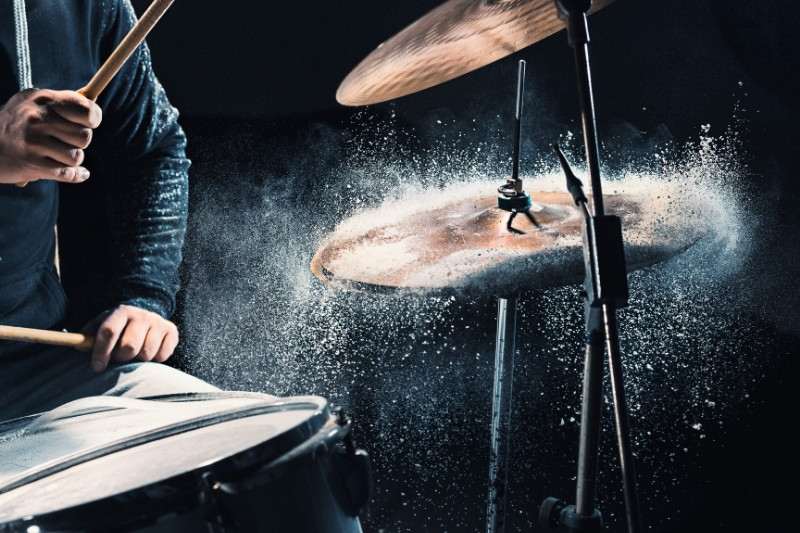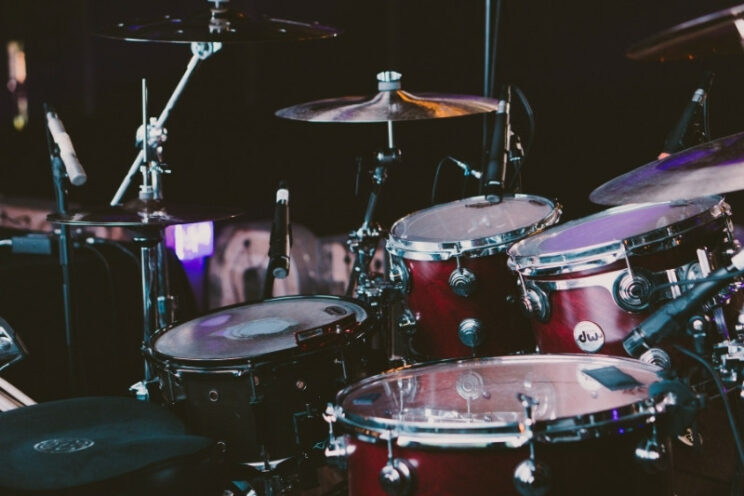How Loud are Drum Sets in Decibels (dB)?

Music loudness is measured in decibels (dB) and an acoustic drum set can go as loud as 130 decibels. It reaches loudness levels that are harmful to the drummer and others in its vicinity. This results in potential hearing issues so one needs to be mindful.
Musicians are in a high-risk category for hearing loss issues. It is not rocket science: the long hours spent on your instrument, with a sound emission that is often beyond the recommended threshold, can cause serious damage.
Time will not heal many of these issues. Hearing damage and tinnitus can quickly become chronic at an early age unless you take precautions.
Acoustic drums and percussion are usually a lot noisier than other instruments, so drummers and percussionists should take extra care of their ears.
Contents
At a Glance
- An acoustic drum set can go as loud as 130 decibels which is a high-risk level that can lead to hearing loss if not careful.
- Recurring symptoms of potential hearing damage include tinnitus, muffled hearing, feeling the ear canal padded, and having the need to raise your voice when speaking.
- Loud music can have detrimental consequences on your hearing. Typically, a rock concert is around 115 dB which is alarming. That’s why using earplugs, earmuffs, and headphones is advised.
- Other steps drummers can take to prevent potential hearing impairment include using hot rods, drum brushes, or lighter sticks. Headphones are a given. Try using low-volume cymbals, drum mutes, electronic drums, or IEMs.
- While drumming has alarming dB intensity, proper prevention is key to healthy hearing. Do not overexpose yourself without the proper protection.
Sound Intensity and Drum Kits

Recommended levels of sound intensity are almost always indicated in decibels (dB). Complete drum kits usually oscillate between 90 and 130 decibels, but many factors can affect their level of intensity.
The number of decibels will depend on the material, size, and depth of the drum. It will also be affected by how hard the drummer is hitting, the style of music, and the environment.
In particular, snare drums can emit between 90 and 120 decibels. This level equals the noise of a subway train or the sound level of a rock concert. Snare drums, however, are not the noisiest part of a drum: cymbals can emit between 110 and 125 decibels, equaling the noise experienced at a stock car race.
Bass drums, on the other hand, are a bit less noisy, emitting about 105 decibels, just like a leaf blower or a snowmobile. On top of that, when the human ear perceives any sound around 120 decibels, it could result in pain or discomfort.
Considering that the OSHA (Occupational Safety and Health Administration) suggests 85 dB as a threshold to avoid issues with your ears, drummers are certainly at risk. Drummers can start damaging their hearing within minutes or seconds of exposure to the loud noises of an acoustic kit.
Other instrumentalists, such as rock guitarists, can experience the same issues (a rock amplifier can reach 120 dB).
Classical instruments such as the piano or the violin, on the other hand, are less noisy (between 60 and 70 dB in the former; 80 to 90 dB in the latter), but the risk is still present at rehearsals and concerts, as the sound intensity of a whole ensemble can reach 100 or more decibels.
However, drum kits are among the noisiest and least controllable instruments out there. After all, you can tweak a guitar amp down a bit, but you can’t really change the sound intensity of a cymbal.
A study has shown that 57% of professional drummers and 44% of amateurs experience tinnitus (ringing in their ears).
Don’t Underestimate the Symptoms
How do you understand whether there is a problem with your hearing? There are certain recurring symptoms you should be aware of.
Symptoms include:
- tinnitus (most commonly ringing, popping, or pulsing sounds in your ears).
- hearing of muffled sounds.
- feeling the ear canal padded.
- having the necessity of raising your voice when speaking.
If you experience these symptoms, check with a doctor or audiologist to help determine the cause and if there are any solutions. These problems are not always caused by excess noise.
If you think your issues are noise-induced, then start taking action right away to stop the problem from getting worse.
The Impact of Loud Music and Longevity

Loud music can damage hearing and cause other health problems.
Loud music is considered one of the most common causes of hearing loss. Also, loud music can adversely affect other aspects of human life such as academic performance and social behavior.
The decibel level of a rock concert is roughly 115. Hearing damage can begin after only three minutes of exposure to over 115 decibels. Above 120 decibels for 30 seconds is harmful. 125 dB may produce discomfort.
Drummers should use the necessary protection when they are playing loud music. To improve their longevity, drummers need to wear earplugs whenever they are playing loud music, as loud decibels can cause permanent hearing loss.
The longer a drummer plays loud music without protection, the higher their risk of developing tinnitus and other hearing problems. Longevity is important in the music business, as it is very competitive and an aging drummer will find it extremely difficult to find work.
Prevention is Key
Luckily, there are ways that can help to stop this problem from getting worse:
Drummers can count on a series of common-sense practices and useful tools to mitigate their exposure to loudness.
First of all, take breaks between sessions. If you give your ears enough time to recover from one session to another you can minimize the chances of developing permanent hearing issues.
Another useful practice is the use of earplugs or earmuffs.
There are different kinds of earplugs available on the market (foam, custom molded, triple-flanged), so you can choose what feels more comfortable for you. These devices are a great help, as they can reduce sound intensity by 15-30 decibels.
Some earplugs are designed to block only certain frequencies and they are great when playing cymbals or snare drums, as high frequencies are usually the most annoying to the human ear.
You could also opt for noise-isolating headphones or earmuffs to physically block the noise.
Another solution consists in choosing the right equipment.
Hot rods, drum brushes, or even lighter sticks will help you hit the drums with less power, resulting in smaller sound intensity.
Low-volume cymbals are also present on the market. These cymbals minimize the high frequencies, making your practice way less dangerous for your ears.
You could also buy drum mutes to make the sound of your heads and cymbals less intense or opt for quiet drumheads.
Electronic drums are much less noisy too. Even if you don’t want to use them during live gigs, you can always use them for practice, cutting off the time you expose your ears to unhealthy noises.
Last but not least, in-ear monitors can give you control over your volume during live shows, doing a great favor to your ears.
Summary
An acoustic drum set can go as loud as 130 decibels. People who play loud music can lose their hearing and even develop tinnitus, which is a constant ringing in the ears that makes it hard to concentrate on anything else.
While loud music can be dangerous, there are ways to avoid loud music-induced hearing loss, such as by using earplugs or other devices that reduce sound intensity. You should also allow for breaks between sessions and pick the right equipment.
Finally, if loud music is too much of a problem, you could always choose quieter drum machines instead of loud live drums.








This was a great article until hot rods were mentioned…
😀 – fair enough, they’re not for everyone!